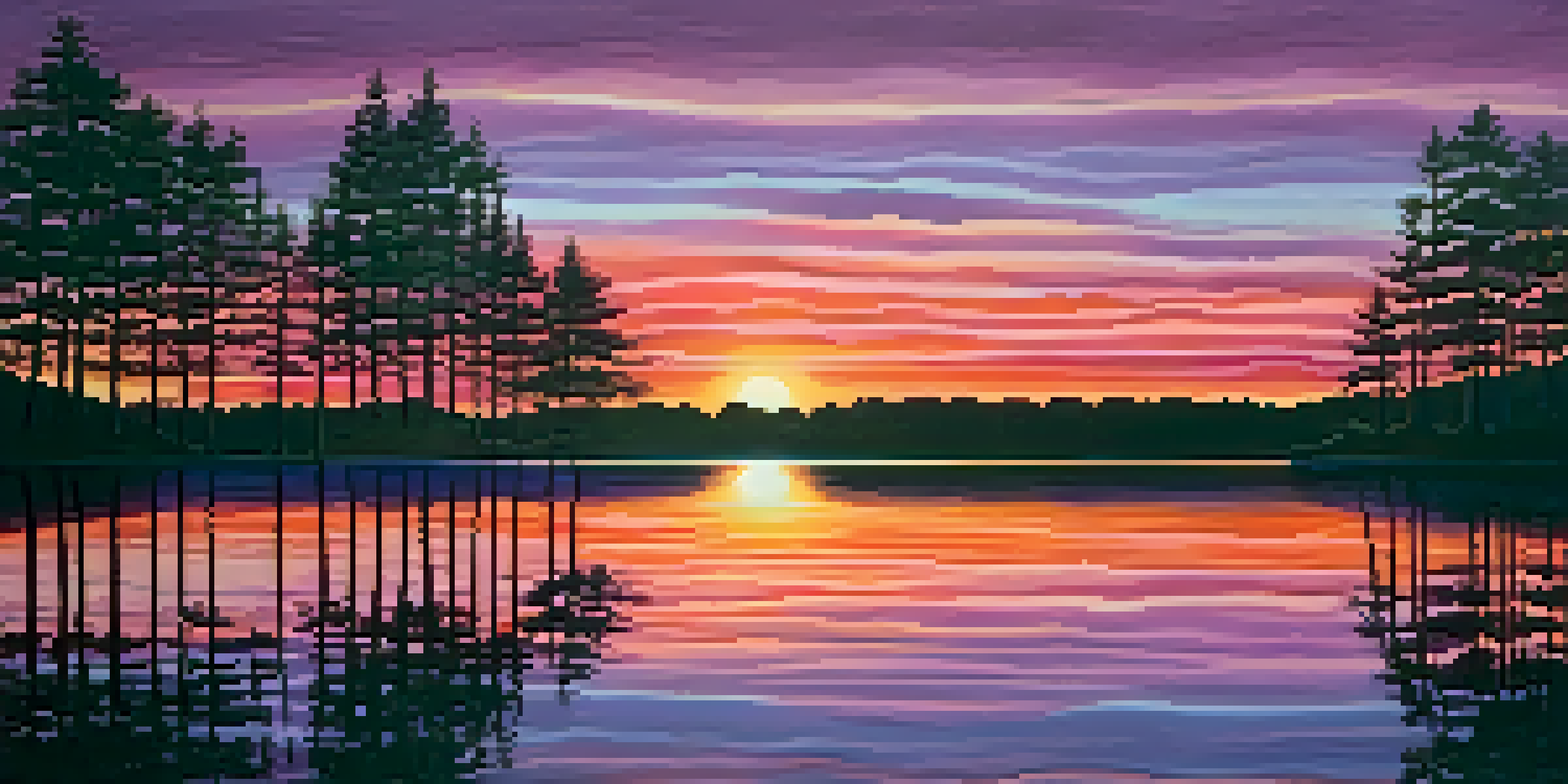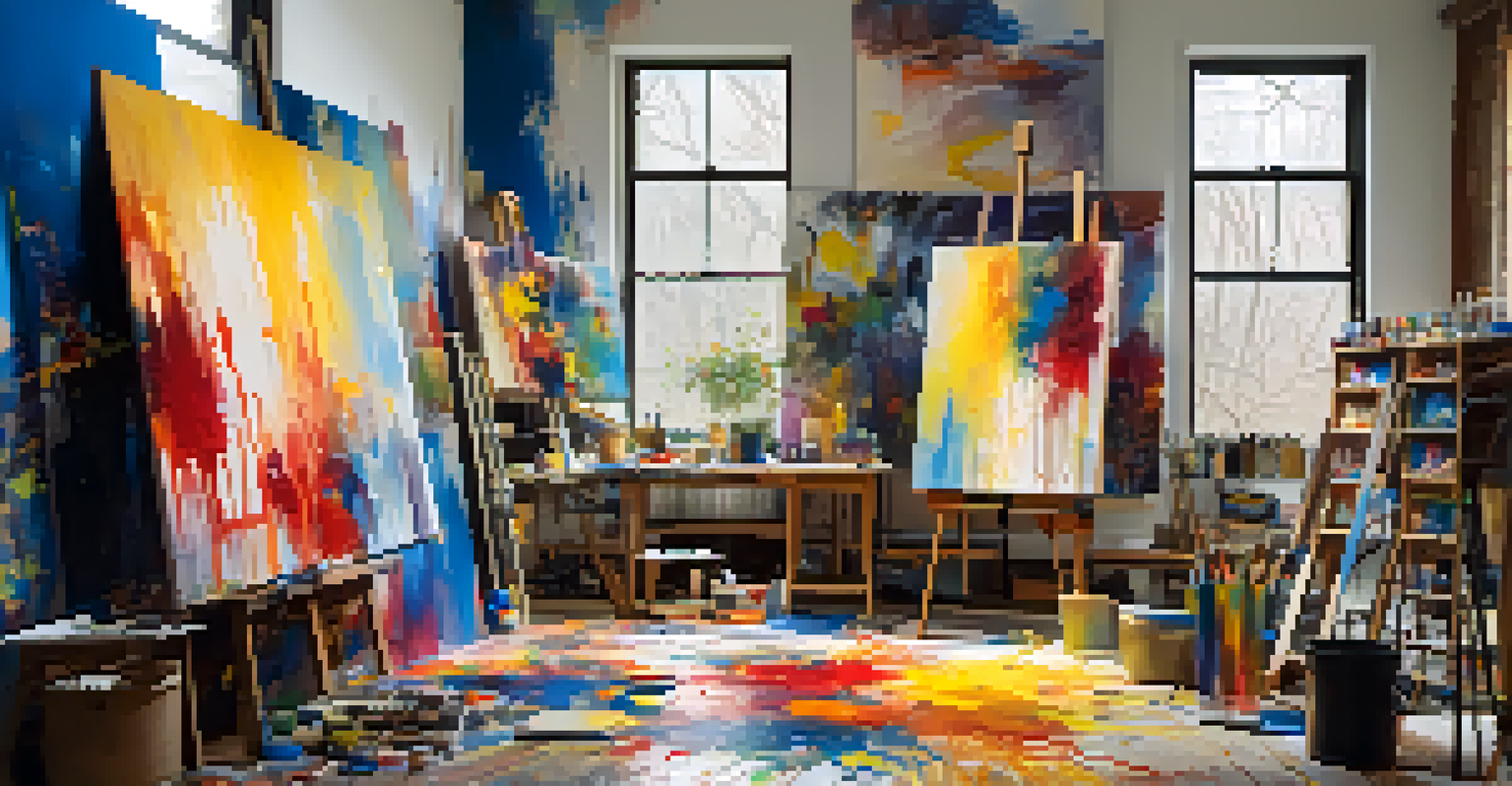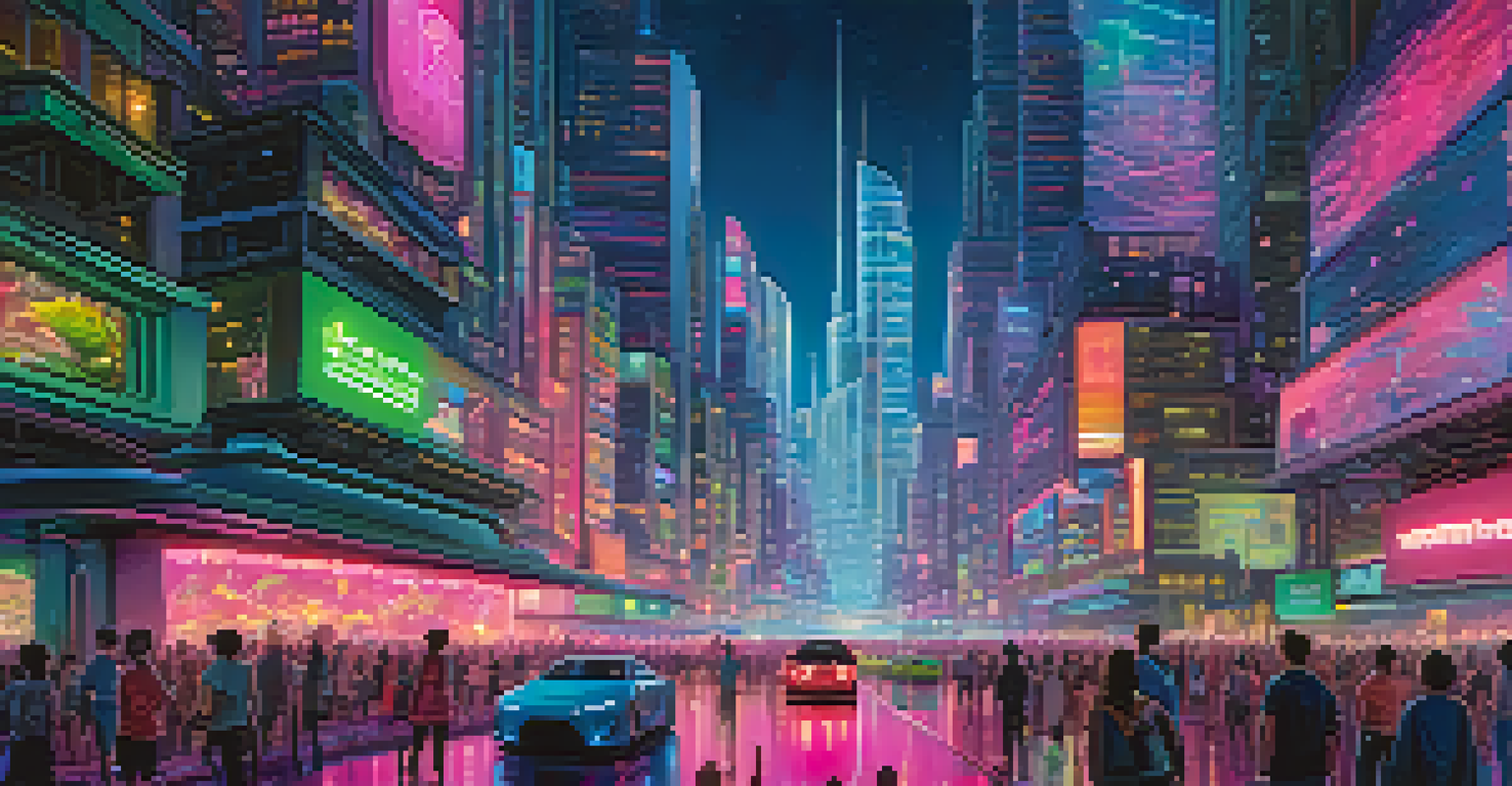Machine Learning and Its Influence on Artistic Innovation

Understanding Machine Learning and Its Basics
Machine learning is a subset of artificial intelligence that enables systems to learn from data and improve over time without explicit programming. It's like teaching a child to recognize animals by showing them countless pictures rather than giving them a strict set of rules. This learning process involves algorithms that analyze patterns and make predictions, which is increasingly relevant in various fields, including art.
Art is not freedom from discipline, but disciplined freedom.
The beauty of machine learning lies in its ability to generate new ideas and concepts by analyzing existing data. For artists, this means collaborating with technology to push the boundaries of creativity. Just as a painter might mix colors to create something new, machine learning can blend styles and techniques to produce innovative artworks.
As we dive deeper into this topic, we'll see how machine learning is influencing artistic expression, providing tools that help artists create in ways that were once unimaginable. It's a fascinating intersection of art and technology that continues to evolve, opening new avenues for artistic exploration.
The Role of Algorithms in Artistic Creation
Algorithms are the backbone of machine learning, and in the context of art, they serve as creative partners. These algorithms can analyze thousands of artworks, identifying trends, styles, and techniques that humans might overlook. Imagine having an assistant who can sift through a vast library of art history in seconds, providing insights that inform your own creative process.

Artists are using these algorithms to generate unique pieces, often blending human creativity with machine-generated ideas. For instance, a musician might use an algorithm to compose a melody based on various musical genres, leading to a completely new sound. This kind of collaboration challenges traditional notions of authorship and creativity, inviting us to rethink what it means to create art.
Machine Learning Enhances Creativity
Machine learning empowers artists by analyzing data and generating innovative ideas, thus merging technology with artistic expression.
Furthermore, the use of algorithms encourages experimentation and risk-taking. Artists can explore various styles and techniques without the fear of failure, knowing that every attempt contributes to the learning process. This dynamic relationship between human and machine fosters an environment ripe for innovation and artistic growth.
Generative Art: Where Machine Learning Meets Creativity
Generative art is a fascinating genre that utilizes algorithms to create artworks autonomously. By feeding data into machine learning models, artists can produce pieces that reflect a blend of human intention and machine interpretation. It’s akin to planting seeds and allowing nature to shape the final garden, resulting in unique and unexpected outcomes.
The greatest artist is not necessarily the one who creates the best art, but the one who inspires others to create.
One prominent example is the work of artists like Refik Anadol, who uses machine learning to transform data into immersive visual experiences. These artworks often challenge viewers to engage with art in a new way, as they are not just passive observers but participants in a dynamic process. The result is a blend of technology and artistry that captivates and invites dialogue.
Generative art illustrates the potential for machines to not only assist but also inspire creativity. As artists embrace these tools, they unlock new possibilities and redefine what it means to be an artist in the digital age. This ongoing exploration encourages a collaborative spirit between human creativity and technological advancement.
AI-Powered Tools Transforming Artistic Expression
AI-powered tools are revolutionizing the way artists approach their craft. From applications that suggest color palettes to those that help design intricate patterns, these tools enhance the creative process. Think of it as having a brainstorming partner that offers fresh ideas and perspectives, making the artistic journey more dynamic and exciting.
For example, tools like DeepArt and Runway ML allow artists to experiment with style transfer, where they can apply the aesthetic of one artwork to another. This not only saves time but also opens doors to new forms of creativity. Artists can explore styles and techniques they might not have considered, enriching their artistic vocabulary.
AI Tools Democratize Art Creation
AI-powered tools make artistic techniques more accessible, allowing a broader range of voices to contribute to the art world.
Moreover, these tools are becoming increasingly accessible, allowing budding artists to experiment without the steep learning curve often associated with traditional art forms. This democratization of art creation fosters a diverse range of voices and perspectives, ultimately enriching the artistic landscape as more people find their unique expression.
The Impact of Machine Learning on Art Communities
Machine learning is not just altering individual artistic practices; it's also reshaping art communities. Online platforms powered by AI are connecting artists from diverse backgrounds, allowing them to collaborate and share their work more easily. This interconnectedness fuels innovation, as different cultural perspectives blend to create something truly unique.
For instance, virtual galleries and AI-driven social media platforms enable artists to showcase their work globally, reaching audiences that were previously out of reach. This exposure can lead to new opportunities and collaborations, fostering a sense of community that transcends geographical boundaries. It’s like a global art studio where everyone can contribute and learn from one another.
Additionally, machine learning can help identify emerging trends within these communities, guiding artists in their creative journeys. By analyzing what resonates with audiences, artists can adapt and evolve their practices, ensuring they remain relevant in an ever-changing landscape. This collaborative and adaptive spirit is vital for the future of art.
Ethical Considerations in AI-Driven Art
As machine learning increasingly influences the art world, ethical considerations come to the forefront. Questions about authorship, originality, and the potential for bias in AI-generated art are essential to address. For instance, if a machine creates a piece that closely resembles an existing artwork, who holds the copyright? These conversations are crucial in navigating the new landscape of artistic innovation.
Moreover, there's a concern that AI might perpetuate existing biases in art. If machine learning algorithms are trained on datasets that lack diversity, the resulting art may reflect those biases, further marginalizing underrepresented voices. It’s akin to running a race with a blindfold; if the input data isn't diverse, the output will inevitably lack breadth and depth.
Ethics in AI Art Creation Matter
Addressing ethical concerns around authorship and bias is essential as machine learning continues to shape the future of art.
Artists and technologists must work together to create ethical guidelines that ensure inclusivity and fairness in AI-driven art. By fostering an open dialogue about these challenges, we can create a more equitable artistic landscape that respects all voices while embracing the potential of technology to enhance creativity.
The Future of Artistic Innovation with Machine Learning
Looking ahead, the future of artistic innovation in the age of machine learning appears bright. As technology continues to evolve, artists will have access to even more advanced tools and resources. This ongoing development promises to further blur the lines between human creativity and machine-generated art, creating a rich tapestry of expression that is both exciting and unpredictable.
Moreover, as collaborations between artists and machine learning become more commonplace, we can expect to see new genres and styles emerging. Just as the advent of photography and digital media reshaped art in the past, machine learning has the potential to redefine how we perceive and create art today. It’s like a new chapter in an ever-expanding book of creativity.

Ultimately, the integration of machine learning into the artistic process invites us all to rethink our definitions of art and creativity. As we embrace these changes, we can look forward to a future where the synergy between technology and human expression leads to groundbreaking innovations that inspire generations to come.